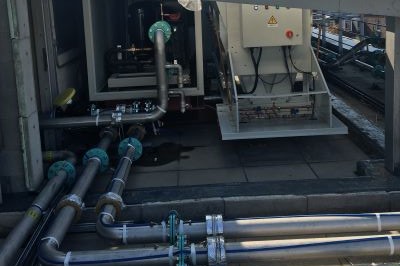Training
Training and Health and Safety
Air conditioning is integral to the comfort and productivity of residential and commercial spaces. However, as with any equipment, the installation, operation, and maintenance of air conditioning systems come with health and safety considerations. Ignoring these can lead to accidents, illnesses, or system malfunctions. Therefore, understanding and implementing health and safety protocols in relation to air conditioning systems is not only a legal requirement but also a necessity for the well-being of all involved.
The pooling of knowledge and experience within Ceilite through participation means that health and safety training has truly become everyone’s responsibility. Employees at all levels partake in a variety of activities, helping to set performance standards, devise operating systems, procedures, and instructions for risk control, and aid in the monitoring and auditing process.
Get a Free Consultation







The Role of Training in Promoting Health and Safety
Training plays a vital role in ensuring health and safety in air conditioning operations. Technicians must receive comprehensive training on handling refrigerants, managing electrical hazards, operating tools and equipment safely, and understanding the principles of system installation, operation, and maintenance. This training should also cover emergency procedures and risk assessment. A well-trained technician will not only execute tasks safely and efficiently but will also be equipped to identify potential issues before they escalate, thereby reducing the risk of accidents and ensuring the longevity and efficiency of the air conditioning systems. Ultimately, health and safety in air conditioning is about creating a culture that prioritizes the well-being of people while ensuring optimal system performance.
TYPES OF BUSINESSES WE COVER

OFFICES
Providing more comfort, energy efficiency, and a healthier working environment.

HEALTHCARE
Improving relaxation, hygiene, and accurate temperature control for patient wellbeing.

IT COMPANIES
Maintaining equipment longevity, thermal management, and employee comfort, boosting productivity.

LABORATORIES
ensuring precise temperature control, equipment preservation, and lab researcher conditions.

GYMS
Enhanced conditions promoting optimal performance, comfort, and satisfaction for members.

INSTITUTIONS
Fostering a conducive environment, promoting focus and energy efficiency throughout.

HOSPITALITY
Elevating the experience for guests and team members throughout each establishment.

INDUSTRIES
Managing temperatures to ensure equipment reliability and worker comfort and safety.
Health and Safety Risks and Precautions in Air Conditioning
Air conditioning systems carry certain inherent risks. These include electrical hazards, refrigerant leaks, and injuries from handling heavy equipment. Moreover, poorly maintained systems can lead to the spread of bacteria and mould, affecting indoor air quality and potentially causing health issues. To mitigate these risks, technicians must adhere to safety standards, including using appropriate personal protective equipment (PPE), adhering to correct handling procedures for refrigerants, and ensuring regular maintenance of the systems. Also, equipment should be checked regularly for electrical safety, and installations should be carried out according to manufacturer guidelines and local regulations.













